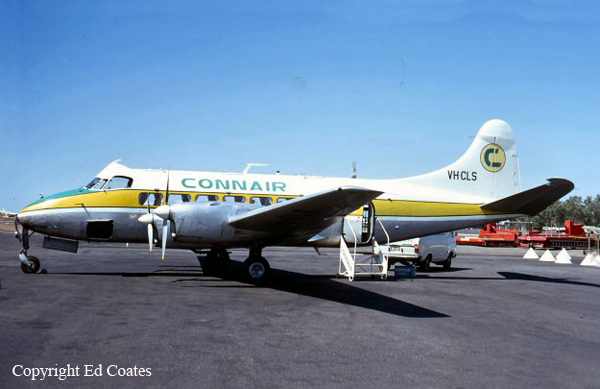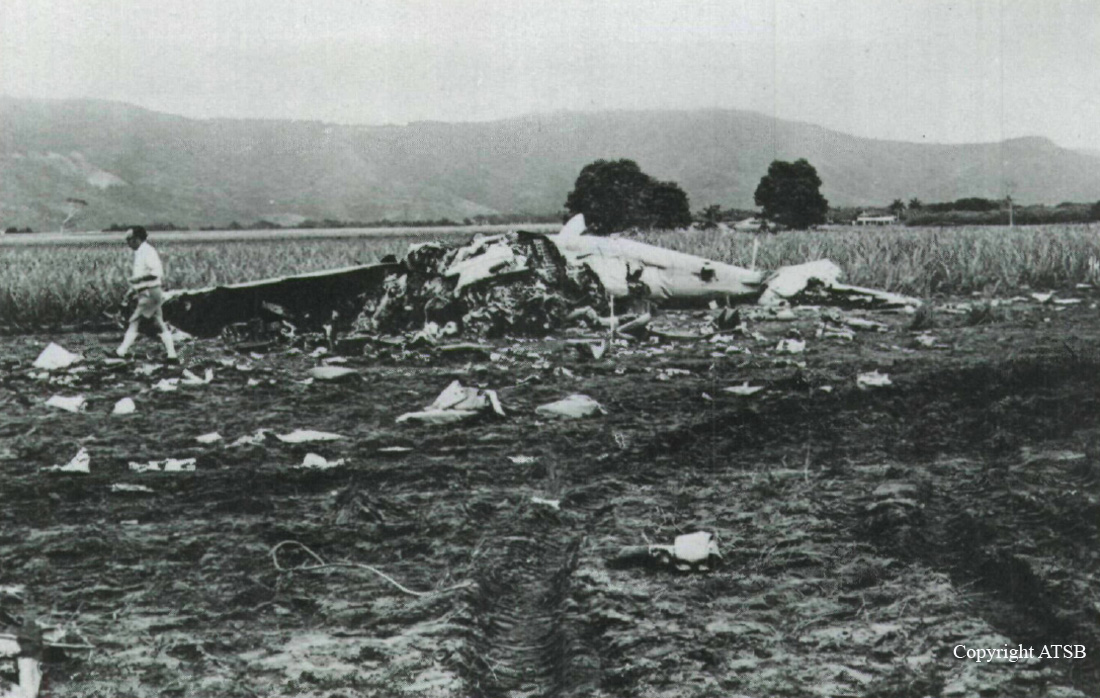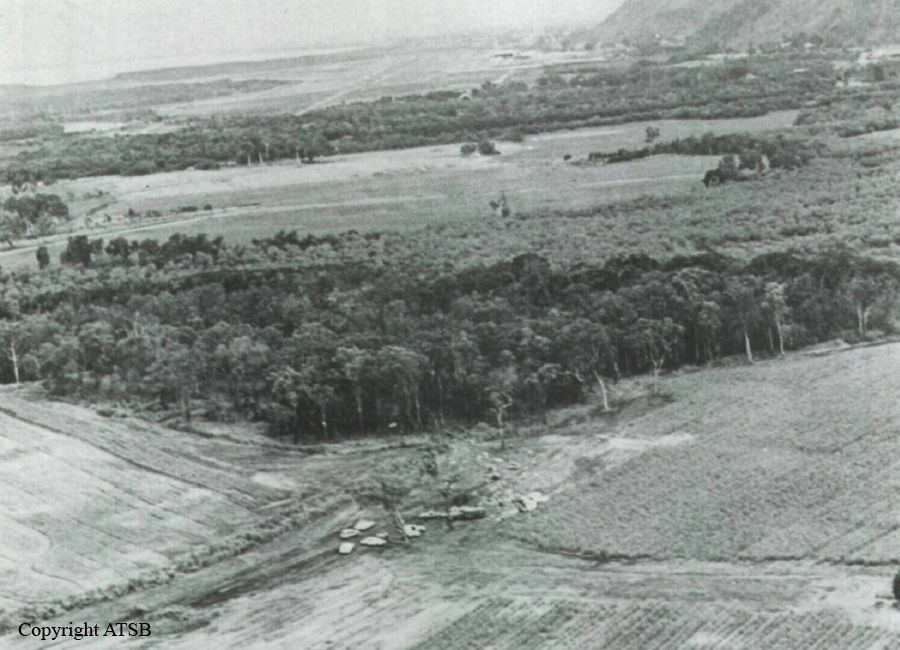Country
Crash of a De Havilland DH.114 Heron 2B in Suva
Date & Time:
Dec 15, 1991
Registration:
DQ-FEE
Survivors:
Yes
Schedule:
Suva - Suva
MSN:
14057
YOM:
1955
Crew on board:
2
Crew fatalities:
Pax on board:
0
Pax fatalities:
Other fatalities:
Total fatalities:
0
Circumstances:
The crew (one pilot and one instructor) was completing a local training flight at Suva Airport. On approach, the crew failed to lower the landing gear, causing the aircraft to land on its belly. It slid on the runway for few dozen metres before coming to rest. Both pilots escaped uninjured while the aircraft was damaged beyond repair.
Probable cause:
The crew failed to follow the approach and landing checklist and forgot to lower the landing gear.
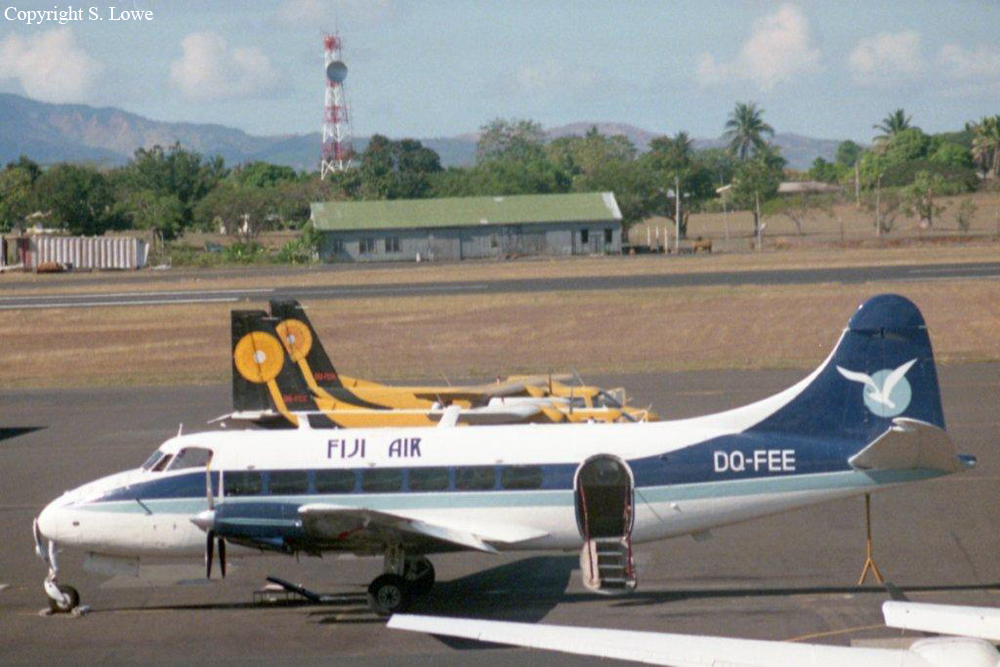
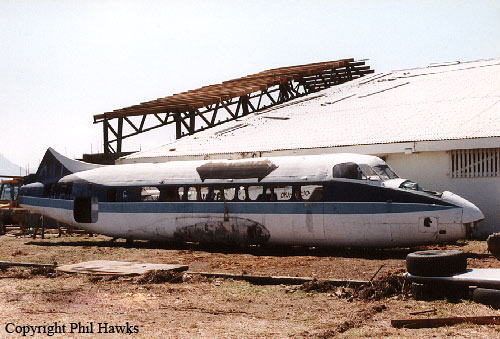
Crash of a De Havilland DH.114 Heron 2B in Nadi: 11 killed
Date & Time:
Dec 27, 1986 at 1348 LT
Registration:
DQ-FEF
Survivors:
Yes
Schedule:
Savusavu - Nadi
MSN:
14056
YOM:
1955
Crew on board:
2
Crew fatalities:
Pax on board:
12
Pax fatalities:
Other fatalities:
Total fatalities:
11
Circumstances:
On final approach to Nadi Airport runway 21, at an altitude of 500 feet, the right flap jammed in a 35° angle while the left one was down at 60°. This caused the aircraft to roll to the left and to crashed short of runway. Both pilots and nine passengers were killed while three others were seriously injured.
Probable cause:
Unsecured non-standard flap attachment pin migrated upward and lodged in a lightening hole.
Crash of a De Havilland DH.114 Heron 2 in Vanua Balavu: 1 killed
Date & Time:
Sep 11, 1986 at 1145 LT
Registration:
DQ-FEC
Survivors:
Yes
Schedule:
Vanua Balavu - Suva-Nausori
MSN:
14078
YOM:
1955
Crew on board:
1
Crew fatalities:
Pax on board:
2
Pax fatalities:
Other fatalities:
Total fatalities:
1
Circumstances:
Takeoff from Vanua Balavu Airport was initiated in poor weather conditions. During the takeoff roll, the airplane deviated to the left then veered off runway and eventually collided with trees. A passenger was killed while both other occupants were injured.
Probable cause:
It was determined that the pilot lost control of the aircraft during the takeoff roll in poor weather conditions (low visibility) as he was partially incapacitated due to medication.
Crash of a De Havilland DH.114 Heron 2B in Scottsdale
Date & Time:
Apr 5, 1984 at 1715 LT
Registration:
N81962
Survivors:
Yes
Schedule:
Albuquerque – Scottsdale
MSN:
14053
YOM:
1954
Crew on board:
1
Crew fatalities:
Pax on board:
0
Pax fatalities:
Other fatalities:
Total fatalities:
0
Captain / Total hours on type:
37.00
Aircraft flight hours:
20652
Circumstances:
For undetermined reasons the pilot experienced a power loss on both left engines while turning from left base to final for landing. The pilot was unable to maintain directional control and elected to reduce power on the right engines. During the forced landing roll the aircraft collided with three ditches as well as small trees. As the aircraft touched down both left engines resumed full power. The pilot, sole on board, was uninjured.
Probable cause:
Occurrence #1: loss of engine power
Phase of operation: approach - VFR pattern - base turn
Findings
1. (c) reason for occurrence undetermined
----------
Occurrence #2: forced landing
Phase of operation: descent - emergency
----------
Occurrence #3: on ground/water encounter with terrain/water
Phase of operation: landing - roll
Findings
2. Terrain condition - ditch
----------
Occurrence #4: on ground/water collision with object
Phase of operation: landing - roll
Findings
3. Object - tree(s)
Phase of operation: approach - VFR pattern - base turn
Findings
1. (c) reason for occurrence undetermined
----------
Occurrence #2: forced landing
Phase of operation: descent - emergency
----------
Occurrence #3: on ground/water encounter with terrain/water
Phase of operation: landing - roll
Findings
2. Terrain condition - ditch
----------
Occurrence #4: on ground/water collision with object
Phase of operation: landing - roll
Findings
3. Object - tree(s)
Final Report:
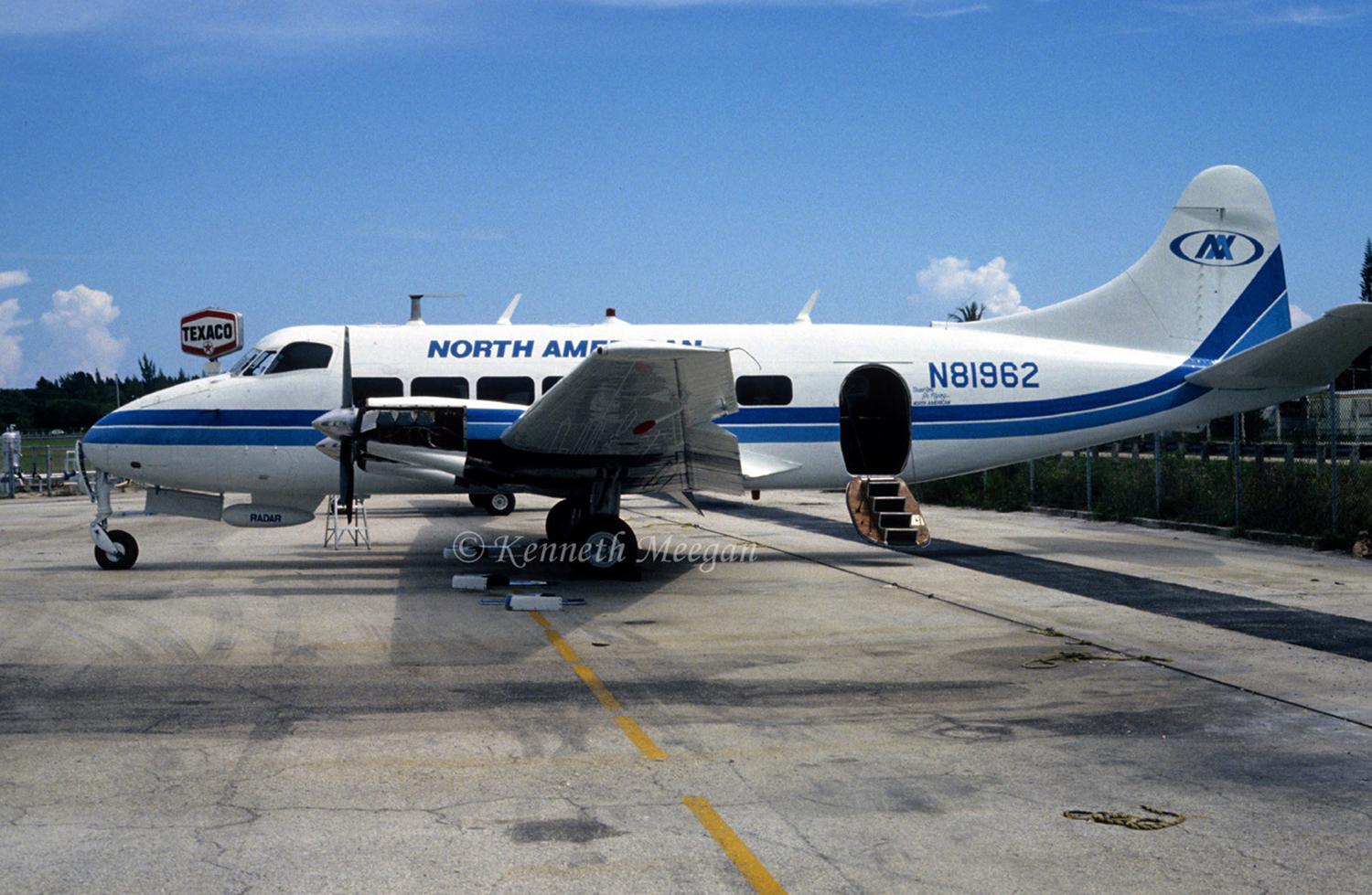
Crash of a De Havilland DH.114 Heron 2D in Launceston
Date & Time:
Aug 4, 1983
Registration:
VH-CLY
Survivors:
Yes
Schedule:
Hobart - Launceston
MSN:
14122
YOM:
1957
Crew on board:
2
Crew fatalities:
Pax on board:
5
Pax fatalities:
Other fatalities:
Total fatalities:
0
Circumstances:
On final approach to Launceston Airport, the aircraft was misaligned and the crew decided to initiate a go-around procedure. Gear were retracted and flaps were partially raised when the airplane lost height and struck fences. It crash landed and came to rest on the runway. All seven occupants escaped with minor injuries and the aircraft was damaged beyond repair.
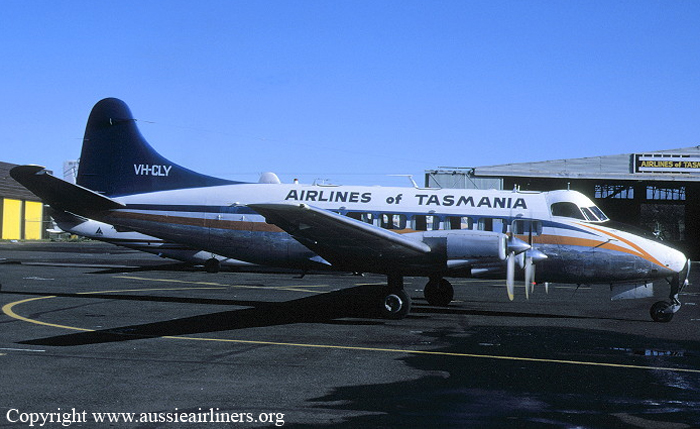
Crash of a De Havilland DH.114 Heron 2B in Christiansted: 8 killed
Date & Time:
Jul 24, 1979 at 0922 LT
Registration:
N575PR
Survivors:
Yes
Schedule:
San Juan – Sint Marten – Christiansted – San Juan
MSN:
14125
YOM:
1957
Flight number:
PQ610
Crew on board:
2
Crew fatalities:
Pax on board:
19
Pax fatalities:
Other fatalities:
Total fatalities:
8
Captain / Total hours on type:
11454.00
Copilot / Total hours on type:
3150
Aircraft flight hours:
23045
Circumstances:
The airplane crashed on the airport while executing a takeoff from the Alexander Hamilton Airport, Christiansted, St. Croix, USVI. There were 19 passengers and 2 crew members on board. The first officer and 7 passengers were killed, and the captain and 12 passengers were injured seriously. The aircraft was destroyed. Witnesses saw the aircraft assume a nose-high attitude shortly after takeoff. The aircraft then began to roll to a left then to a right wing-down attitude, followed by a momentary pitchdown. The aircraft then pitched up and oscillated to a left wing-down and then a right wing down attitude while losing altitude. It struck the ground while in a right wing-down attitude. The gross weight of the aircraft at takeoff was found to be 1,060 lbs over its maximum allowable takeoff weight of 12,499 lbs and the center of gravity was about 8 inches beyond the maximum allowable rear limit.
Probable cause:
The National Transportation Safety Board determines that the probable cause of this accident was the pilot's loss of control of the aircraft after takeoff because of the aircraft's grossly overweight and out-of-balance condition which resulted from misloading by the company's load control personnel. The misloading was due to the failure of the company to supervise and to enforce its loading procedures. The Safety Board also determines that inadequate surveillance and enforcement by the FAA were causal factors in this accident.
Final Report:
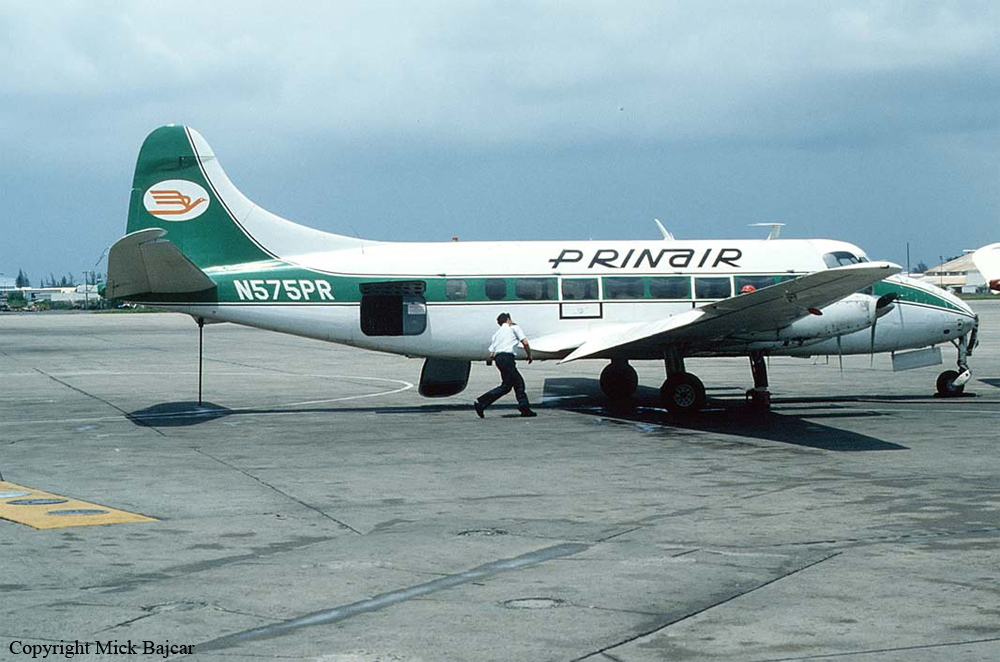

Crash of a De Havilland DH.114 Heron 2 in Cleveland
Date & Time:
Dec 18, 1978 at 1431 LT
Registration:
N3FB
Survivors:
Yes
Schedule:
Mansfield - Cleveland
MSN:
14111
YOM:
1957
Crew on board:
2
Crew fatalities:
Pax on board:
15
Pax fatalities:
Other fatalities:
Total fatalities:
0
Captain / Total hours on type:
908.00
Circumstances:
Following an uneventful flight from Mansfield, the crew was cleared to land at Cleveland-Hopkins Airport. After touchdown, while decelerating on runway, the four engine airplane collided with an airport vehicle that was crossing the runway from a position on airport to terminal area. Following the collision, the crew stopped the airplane on runway and all 17 occupants were evacuated safely. The aircraft was however considered as damaged beyond repair.
Probable cause:
Ground collision with airport vehicle after ATC personnel issue improper or conflicting instructions. The following contributing factors were reported:
- Driver of vehicle,
- Ground controller cleared airport vehicle from position on airport to terminal area.
- Driver of vehicle,
- Ground controller cleared airport vehicle from position on airport to terminal area.
Final Report:
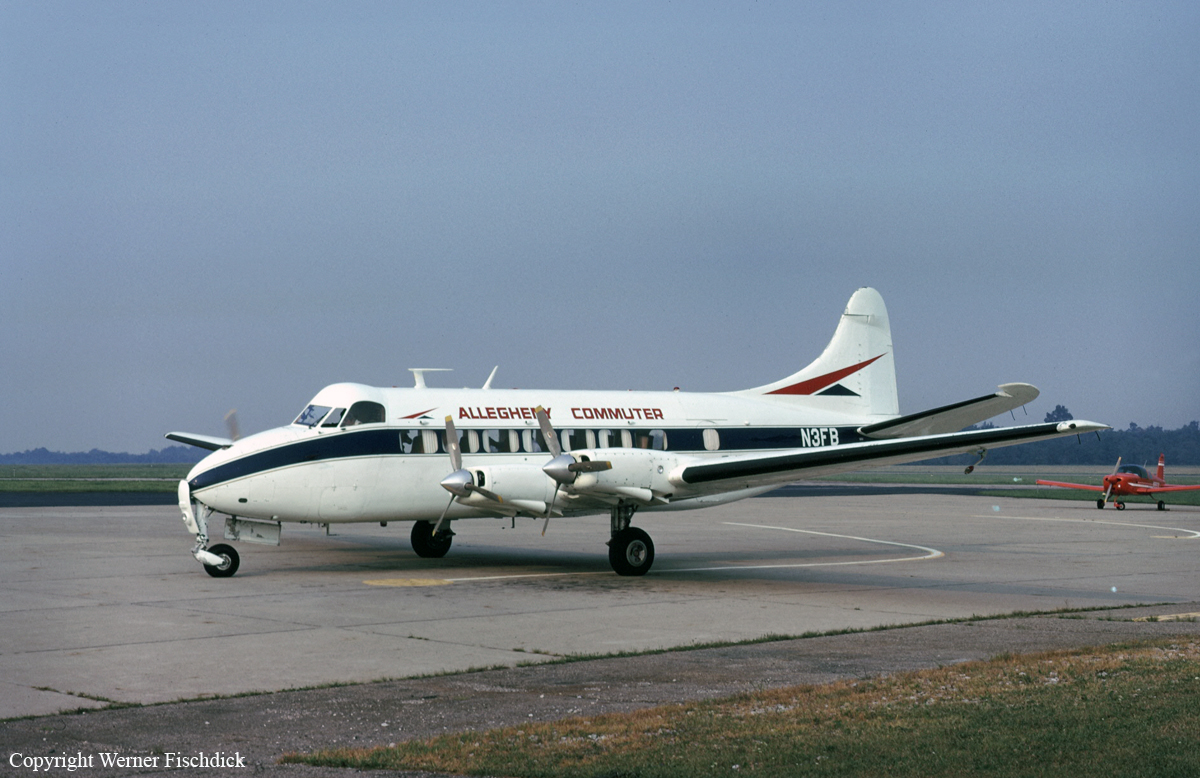
Crash of a De Havilland DH.114 Heron 1B in Ardmore
Date & Time:
May 9, 1977
Registration:
ZK-EJM
Survivors:
Yes
MSN:
14005
YOM:
1952
Crew on board:
1
Crew fatalities:
Pax on board:
0
Pax fatalities:
Other fatalities:
Total fatalities:
0
Circumstances:
For unknown reasons, the four engine airplane landed too far down the runway at Ardmore Airport. After touchdown, the pilot started the braking procedure when the left brakes failed. The airplane veered off runway to the right, struck a drainage ditch and came to rest with serious damages to its nose gear, engines and both wings. The pilot was uninjured and the aircraft was not repaired.
Crash of a De Havilland DH.114 Heron 2E in Cairns: 11 killed
Date & Time:
Oct 23, 1975 at 1928 LT
Registration:
VH-CLS
Survivors:
No
Schedule:
Alice Springs - Mount Isa - Cairns
MSN:
14067
YOM:
1955
Flight number:
CK1263
Crew on board:
3
Crew fatalities:
Pax on board:
8
Pax fatalities:
Other fatalities:
Total fatalities:
11
Captain / Total hours on type:
1030.00
Copilot / Total hours on type:
109
Aircraft flight hours:
14986
Circumstances:
DH-114 Heron registered VH-CLS was operating Connair Flight 1263 from Alice Springs to Cairns landing at Mount Isa en route. At 12:57 hours VH-CLS taxied to runway 30 at Alice Springs and was cleared for takeoff. The flight landed at Mount Isa at 15:35 hours after making a visual approach. At 16:46 hours VH-CLS taxied to runway 34 at Mount Isa, and the flight reported its departure as 16:55 hours at which time it was climbing to its planned cruising altitude of 7000 feet. As the flight progressed position reports at the appropriate reporting points were received. At 18:01 hours, VH-CLS advised that it was descending to cruise at 6000 feet. Subsequently, at 18:49 hours, VH-CLS reported as being at the Saucebottle Creek position, 146 km southwest of Cairns, at an altitude of 6000 feet. The crew indicated an ETA at the Biboohra VOR, 35 km west of Cairns, of 19:12. VH-CLS was then advised by the Cairns aerodrome/approach controller, through the Cairns Flight Service Unit (FSU), to expect an ILS approach to runway 15 at Cairns Airport. At 18:54 hours the Cairns aerodrome/approach controller issued an air traffic clearance, for transmission through the Cairns FSU, authorising VH-CLS to enter the control area via the 049 degree radial of the Biboohra VOR cruising at 6000 feet and using an altimeter setting of 1006 millibars. At about 18:55 hours, the Weather Service Office (WSO) located at Cairns Airport observed a thunderstorm, without precipitation, in the vicinity of the airport and the following 'special' aerodrome weather report was issued: Wind : 360 degrees at 6 knots, visibility : 10 km or more, thunderstorm without precipitation, 1/8 cumulonimbus clouds, base 3000 feet, 4/8 cumulus, base 2300 feet, 4/8 strato cumulus, base 4000 feet. This was reported to the crew. At 19:10 hours, VH-CLS reported to the Cairns aerodrome/approach controller that it was over the Biboohra VOR at 6000 feet and, following confirmation by VH-CLS that its 'preferred approach' was an ILS approach, it was cleared 'on the Biboohra zero four nine radial, descend to three seven zero zero for an ILS approach runway one five, and report at Buchan Locator'. VH-CLS acknowledged this instruction and advised that the aircraft was leaving 6000 feet. At 19:17:29 hours, VH-CLS reported over the Buchan Locator turning outbound onto a heading of 330 degrees this being the standard ILS procedure; the aerodrome/approach controller cleared the aircraft for an ILS approach and instructed it to report leaving 3700 feet. At 19:20:54 hours, VH-CLS reported 'leaving three seven zero zero' implying that the aircraft had commenced the final approach segment of the ILS approach. The aerodrome/approach controller acknowledged the report and radioed: 'wind from the northwest, maximum downwind component runway one five not above six knots, runway wet, clear to land'. At 19:22:53 hours, the controller notified VH-CLS 'there's a moderately heavy shower at the field now, visibility er is reducing as the shower moves south, visibility to the south at the moment er in excess of four thousand metres, high intensity approach and runway lighting is on, advise when you would like the intensity decreased'. VH-CLS acknowledged. At 19:26:23 hours, VH-CLS reported 'going round' and the aerodrome/approach controller instructed VH-CLS to 'make missed approach on a heading of zero three five and climb to three seven zero zero'. VH-CLS turned away from the airport, descended to a low height above terrain, and completed about 270 degrees of a left hand orbit. It then entered a turn to the right during which it descended and crashed.
Probable cause:
The cause of the accident was that, following misalignment of the aircraft with the runway and abandonment of the landing approach, the pilot in command did not immediately initiate a climb to a safe altitude. Why such action was not taken has not been determined.
Final Report:
